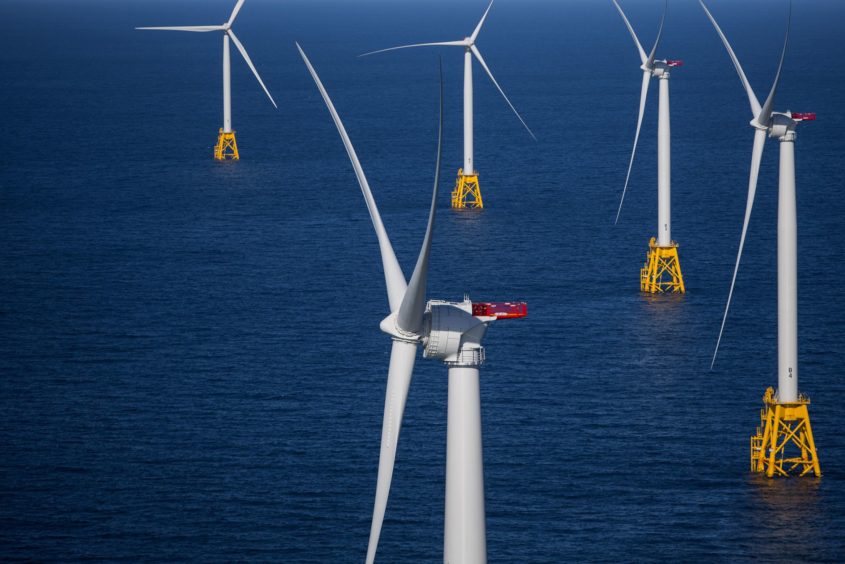
The Trump administration cast the fate of the nation’s first major offshore wind farm into doubt by extending an environmental review for the $2.8 billion Vineyard Wind project off Massachusetts.
The Interior Department has ordered an additional study of the farm, proposed by Avangrid Inc. and Copenhagen Infrastructure Partners, Interior Secretary David Bernhardt said in an interview with Bloomberg News Friday. The project, which has drawn opposition from fishermen and coastal communities, had been scheduled to be operational by early 2022. The developers have warned that regulatory delays could put it in jeopardy.
Bernhardt said it’s crucial the impacts be thoroughly studied. “For offshore wind to thrive on the outer continental shelf, the federal government has to dot their I’s and cross their T’s,” he said.
Avangrid sank as much as 0.9% to $50.34. It closed at $50.37 in New York.
The project south of Martha’s Vineyard is crucial to the future of offshore wind in the U.S. It’s the first of several massive wind farms planned off the East Coast. Massachusetts, New York, Maine and New Jersey are all counting on turbines at sea to achieve aggressive clean energy targets. Their efforts are expected to spur an estimated $70 billion offshore wind industry in the U.S. over the next decade.
Vineyard Wind spokesman Scott Farmelant called the Interior Department’s decision “a surprise and disappointment.”
“We urge the federal government to complete the review as quickly as possible,” he said.
Last month, Avangrid Chief Executive Officer Jim Torgerson said on a call with analysts that the project “will be challenged to move forward in its current configuration” if the final study is not issued by early September.
Vineyard Wind, which would have enough capacity to supply about 400,000 homes, has a contract to sell power to three Massachusetts utilities for $65 per megawatt-hour — a lower-than-expected price that encouraged other states to map out plans for offshore wind. That cost, however, hinged on a lucrative tax credit. The company may not be eligible to claim it if construction is delayed too long.
Marine Life
An Interior Department review explored how Vineyard Wind may affect other industries and resources, including marine life. But the National Marine Fisheries Service raised concerns it looked too narrowly at potential cumulative effects on fishing, prompting the supplemental review, Bernhardt said.
“If it’s going to be developed, it needs to be developed in a way that everyone gets to say, at least, that we didn’t shave the ball,” Bernhardt said.
Massachusetts Representative Joe Kennedy III called the delay a “double standard.”
“When it comes to drilling in the Arctic National Wildlife Refuge, the Trump administration has cut every corner and moved through the environmental review period at record speed,” Kennedy, a Democrat, said in an email. “But when it comes to the nation’s first major offshore wind project — which has gone through years of extensive study, public comment and mitigation plans for impacted communities — they are trying to delay it to death.”
Although the Interior Department has sold the rights to develop wind farms up and down the U.S. East Coast — and states have committed to buying the renewable power they generate — so far just one has been built: a small, 30-megawatt facility near Block Island, Rhode Island, that went online in 2016.
Revising Review
Expectations for offshore wind development are now greater than originally analyzed by the Interior Department, the Bureau of Ocean Energy Management said by email. The supplemental analysis will revise the agency’s assessment of the cumulative impacts of that development, the bureau said.
“There’s a lot riding on getting this right,” said Timothy Charters, vice president of government and political affairs for the National Ocean Industries Association. “It’s critically important that the department produces a decision that can give industry confidence that these projects can be permitted and will be sustained under U.S. courts.”
Recommended for you
